The Huawei P8 Review
by Andrei Frumusanu on June 4, 2015 8:00 AM EST- Posted in
- Smartphones
- Huawei
- Mobile
- P8
- Kirin 930
CPU & System Performance
As mentioned in the introduction of the P8, the new Kirin 930 SoC is an octa-core A53 with one low-power quad-core cluster with a frequency range going from 403MHz up to 1516MHz, and another high-powered cluster going from 1017MHz up to 2016MHz. I was able to determine that the L2 cache size of the high-performance cluster comes in at 512KB, but due to no available rooting mechanisms for the device I couldn't manipulate the device to lock our benchmark tool onto the small cores to determine their exact configuration.
Generally, due to this being an A53 device, we shouldn't be expecting any stellar performance as ARM's little core is about 2-2.5 times slower as an equivalently clocked larger architecture such as an A15 or A57 CPU. So while Huawei ramps up the clocks quite high at 2GHz, it's still very much more of a mid-range performer.
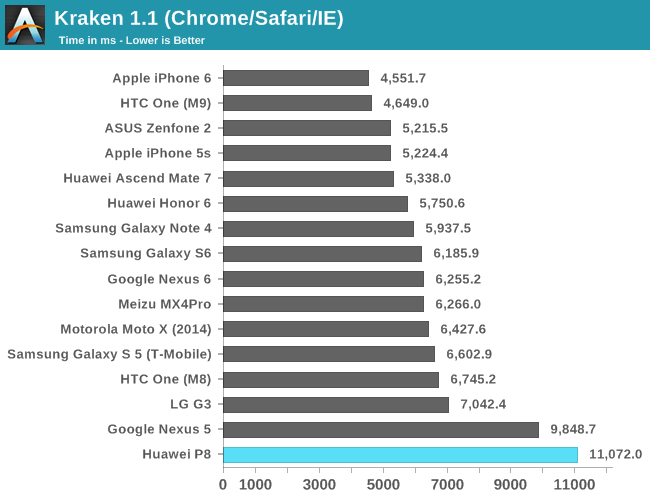
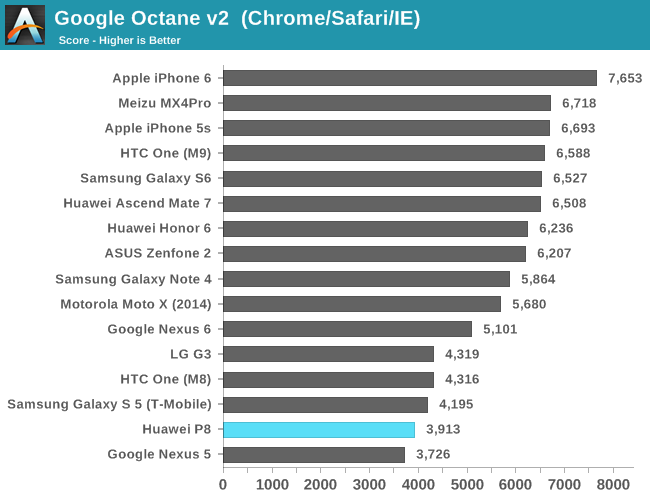
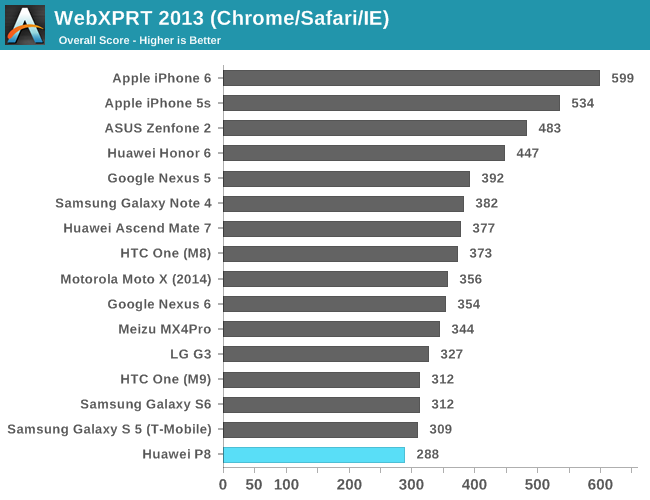
As expected, our in-browser benchmarks put the P8 at the lower-end of the performance spectrum as it simply doesn't have enough processing power to keep up with the competition. I also tested out to see if the stock browser would have any optimizations, but it performed more or less the same as Chrome. This makes sense as compiler targets shouldn't affect an in-order architecture such as the A53 as much as larger and more complex cores as ARM's big lineup of CPUs.
While the Javascript benchmarks represent a good insight in performance when browsing websites in a browser, it's far more common for users to experience web content via third-party applications which make use of a built-in WebView frame, in which case the OS's WebKit engine is used.
PCMark is such a test, where we can analyse performance numbers more representative of daily use-cases.
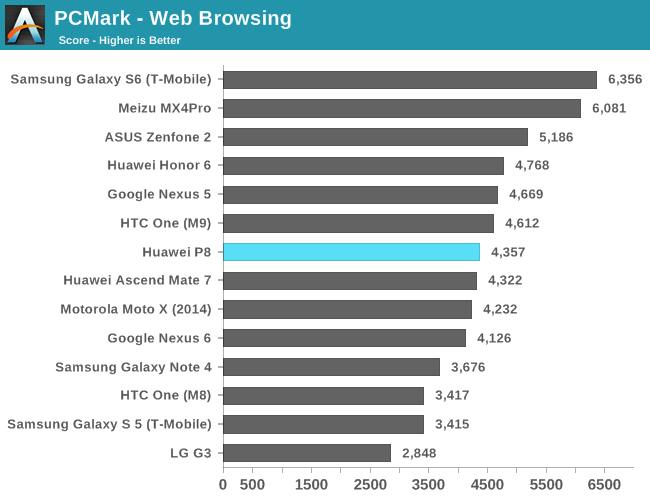
In the Web Browsing test, the P8 manages to land in the middle of the crowd. We saw large performance improvements coming from the Android 5.0 Lolipop update on several of our devices, and we're still in the process of updating all devices to the latest firmware to be able to re-test them.


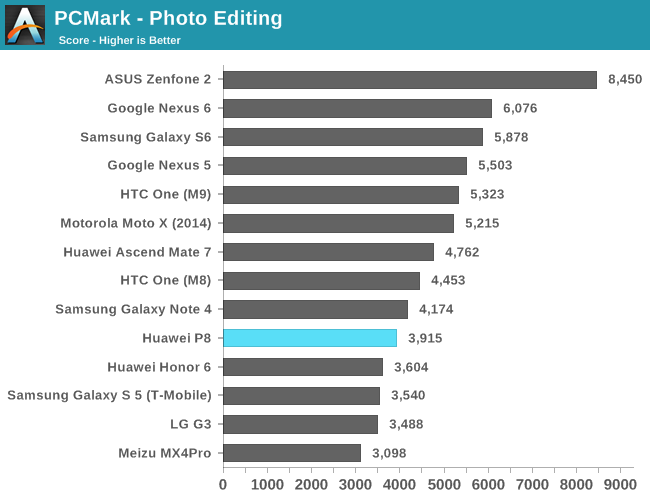
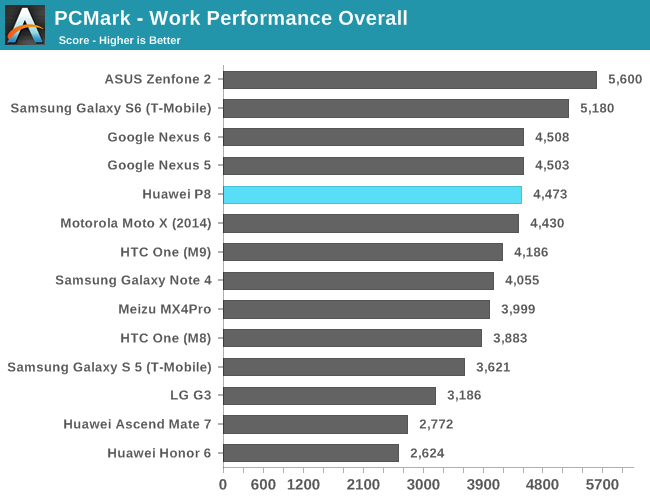
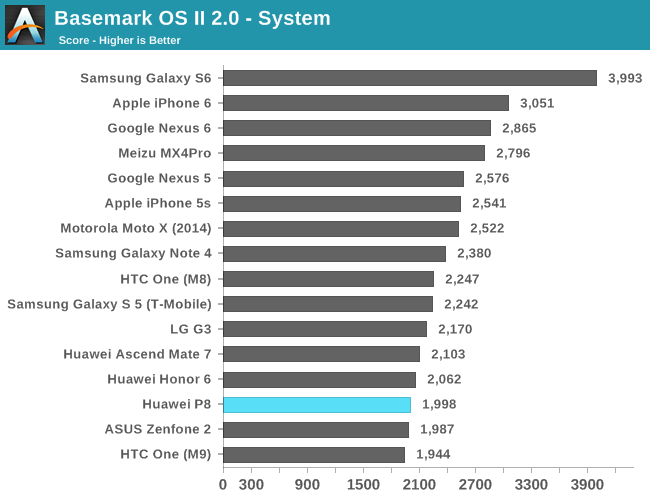
The system benchmark of BaseMark OS is more processing power oriented, as as such, the A53 cores don't perform as well in this test.
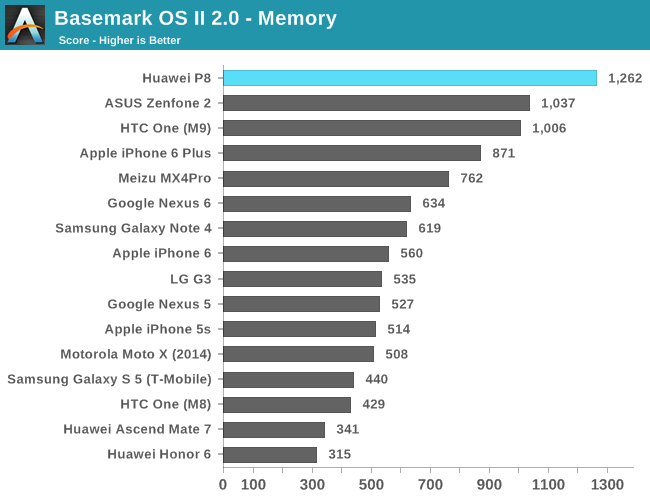
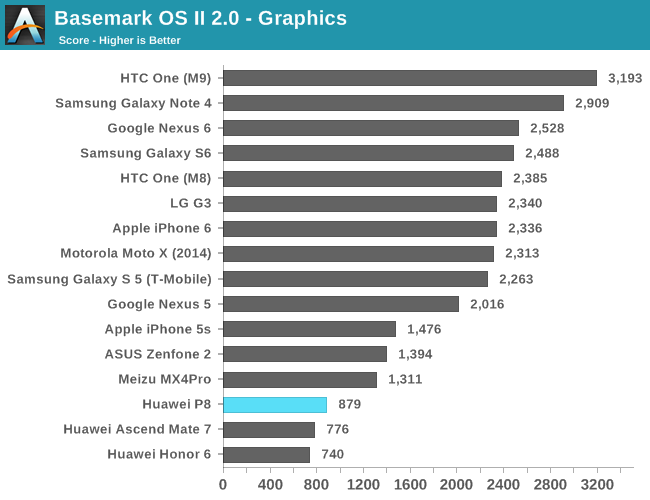
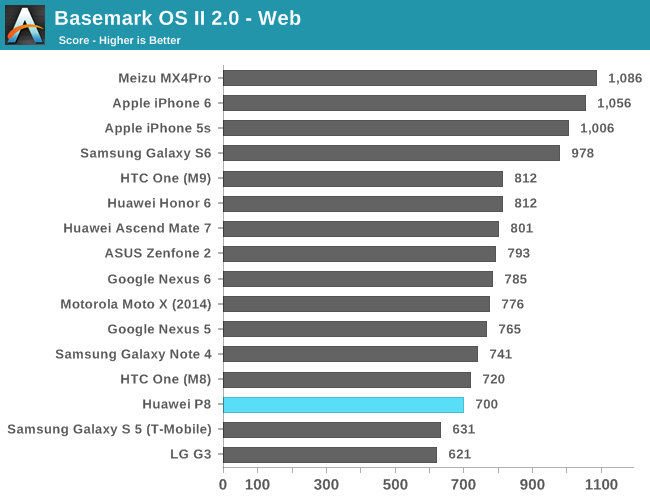

Again, the overall score ends up average for the P8. In every-day usage the device still manages to be quite fast even though it can't be compared to other flagship devices with stronger SoCs. HiSilicon especially seems to have some issues with fluid performance when CPU demand spikes very strongly, as one will notice small stutters throughout some apps when more heavy processing is being performed, something I often reproduce on other big.LITTLE SoCs when I disable aggressive scheduler migrations.










104 Comments
View All Comments
Andrei Frumusanu - Saturday, June 13, 2015 - link
Because our other editors are able to collect the objective data?Ethos Evoss - Saturday, June 13, 2015 - link
objective data these days are completely out of scale total lies .. and 95% incorrect ..alin - Thursday, June 4, 2015 - link
All manufacturers should have an option to revert the software to a vanilla alternative.They can supply it on their website as an option to every user/buyer of their devices.
Many custom rom's just ruin the hole phone experience. The hardware is great but the software is crap...
Ethos Evoss - Friday, June 12, 2015 - link
the main problem is shitty android and it's core so shitty linuxHuawei said they going to start making their OWN OS which will be implemented into their mobiles in future!
jjj - Thursday, June 4, 2015 - link
Any chance you'll get a SD810 and 808 soon to test GPU power? And if you do can you also monitor CPU clocks under that load? I don't even dare to imagine how hard the CPU must throttle when the GPU is loaded.Ethos Evoss - Friday, June 12, 2015 - link
pleease u don't know that already SHIT-DRAGON 810 is EPIC FAIL of the year?? wake up from your dreaam man !Novacius - Thursday, June 4, 2015 - link
Is the memory controller 2x16 bit or 2x32 bit?Novacius - Thursday, June 4, 2015 - link
Because the article says "dual channel 32 bit".Kepe - Thursday, June 4, 2015 - link
Dual channel 32-bit = Two 32-bit memory channels. Plus, a 16-bit memory controller could only address 64KB of memory, compared to the maximum of 4GB for a 32-bit controller... Having 128KB of RAM in a smartphone wouldn't be very wise. It could probably boot in to something like DOS, but Android would definitely not work.Pissedoffyouth - Friday, June 5, 2015 - link
Your confusing bus length with address space.